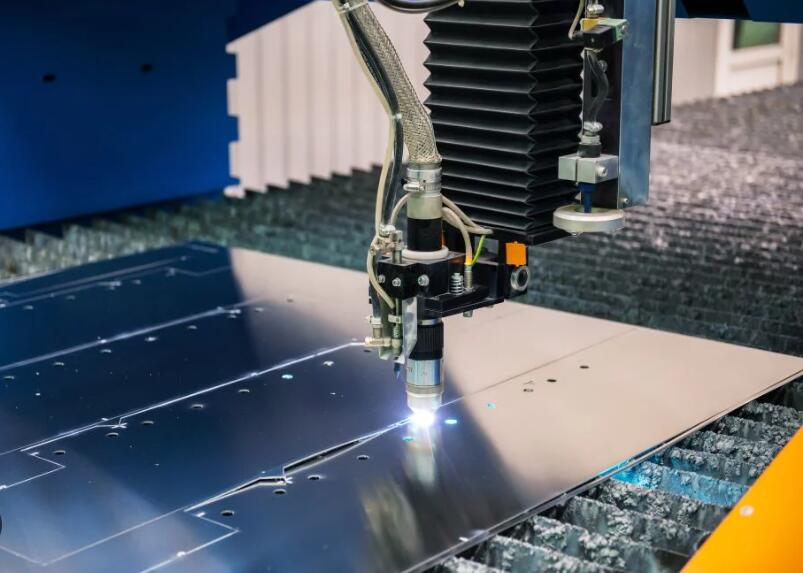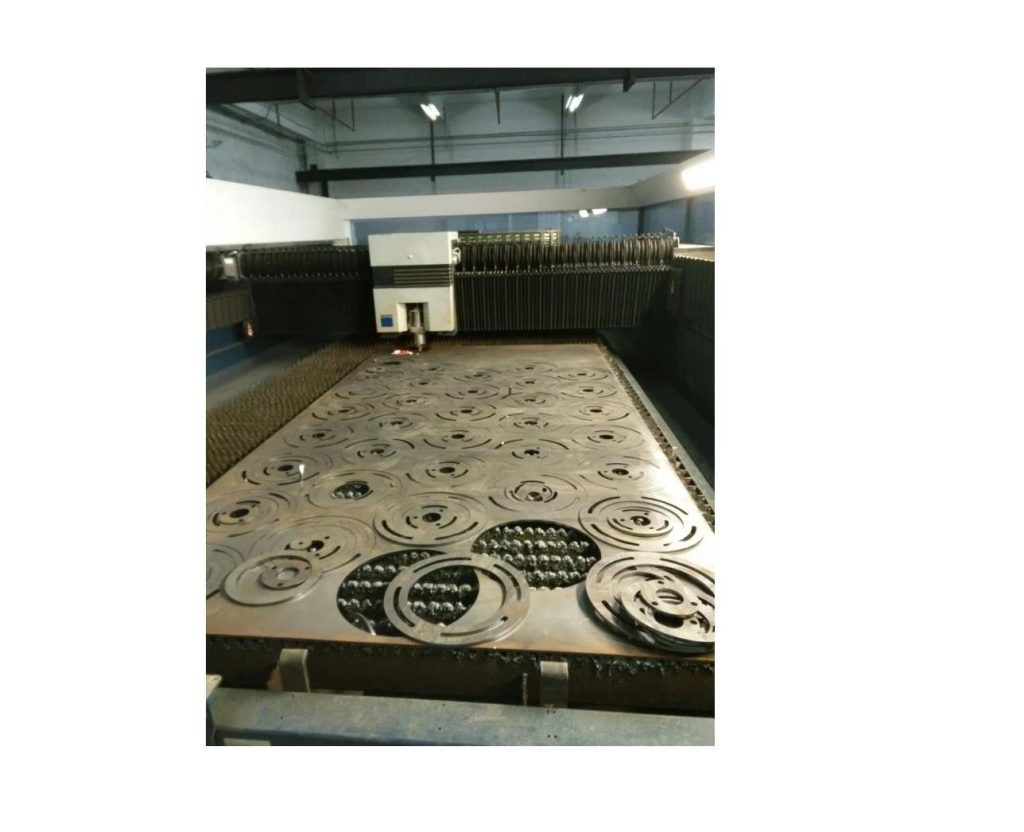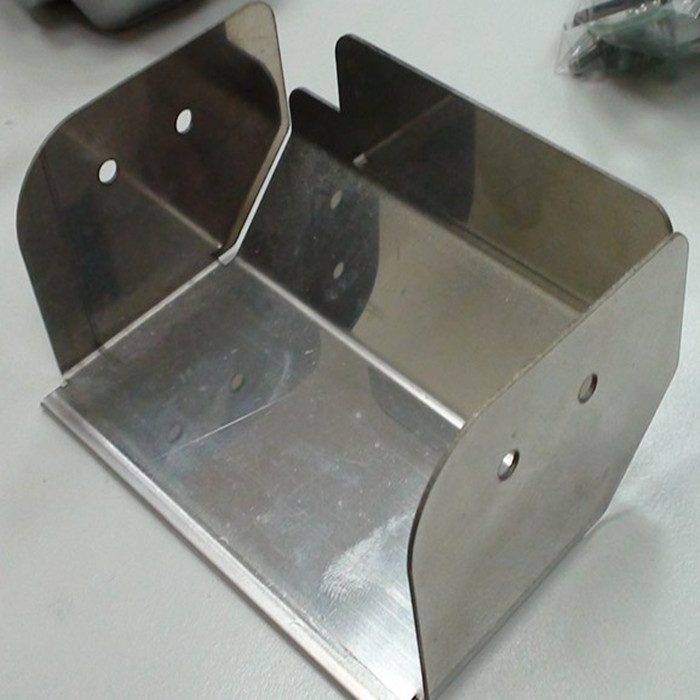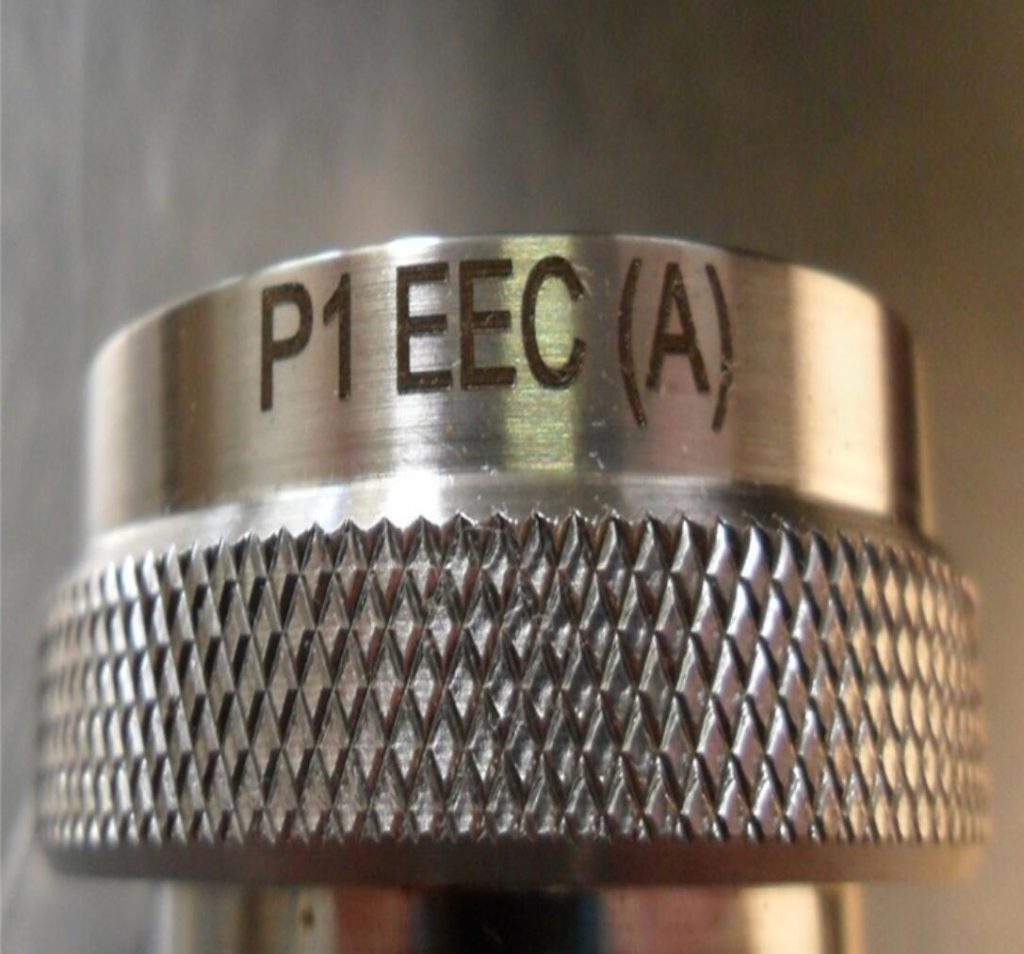- How Does Laser Engraving Aluminum Work?
- Advantages Of Engraving Aluminum With Laser
- Disadvantages Of Engraving Aluminum With Laser
- Types of Lasers for Aluminum Engraving Process
- Laser Cutting Aluminum Vs. Laser Engraving Aluminum
- Aluminum Laser Etching vs. Aluminum Laser Engraving
- Design Considerations for Aluminum Laser Engraving
- Conclusion
- FAQ
Laser Engraving
Laser engraving aluminum involves using a high-powered laser to etch designs onto aluminum surfaces. This method is precise, allowing for detailed graphics and text to be created on aluminum parts. It’s widely used for serial numbers, logos, and custom artwork, providing a fast, durable, and cost-effective solution for both small and large-scale projects.
Knowing the potential and versatility of aluminum laser engraving keeps you a step ahead in product design and customization. Let’s dive deeper into the mechanics of the process and explore how you can leverage this technology to enhance your projects.

How Does Laser Engraving Aluminum Work?
Laser engraving aluminum is a sophisticated process that combines high technology with precision engineering. Here’s a simplified overview of how it works, broken down into three primary steps:
- Preparation of the Aluminum Surface: Before engraving begins, the aluminum surface must be clean and free of any contaminants. This might involve wiping down the surface with a solvent or applying a special coating that enhances the laser’s ability to make a permanent mark. The preparation step is crucial as it ensures that the laser interacts effectively with the material.
- Laser Engraving Setup: The design to be engraved is typically created or converted into a compatible digital format using specialized software. This design file is then input into the laser engraving machine. At this stage, settings such as the laser’s speed, power, and focus are adjusted based on the thickness and type of aluminum. This setup is critical for precision and to avoid damage to the material.
- The Engraving Process: Once everything is set up, the laser engraver directs a concentrated beam of light onto the aluminum surface. The intense heat of the laser causes the material under the beam to vaporize or melt, creating a crisp, permanent engraving. The laser moves across the aluminum surface following the predetermined path defined in the design file, etching the artwork or text into the metal with remarkable accuracy.
Types of Aluminum for Laser Engraving
Bare Aluminum
Bare aluminum refers to aluminum in its natural, untreated state. It’s a popular choice for laser engraving due to its natural ability to form a white oxide layer when engraved, which can create a stark contrast against the shiny metal surface.
However, engraving on bare aluminum requires precise control over the laser settings to achieve clean and visible markings without overly damaging the surface.
Anodized Aluminum
Anodized aluminum is aluminum that has been treated with an anodic oxide finish, significantly enhancing its corrosion and wear resistance. This type of aluminum is ideal for laser engraving because the laser can precisely remove the anodic layer, exposing the bare aluminum beneath.
This creates a very clear and contrasting mark, which is perfect for detailed logos, barcodes, and decorative artwork. The durability of the anodized layer also ensures that the engraving lasts, even in harsh conditions.
Powder-coated Aluminum
Powder-coated aluminum features a protective and decorative coating made from finely ground particles of pigment and resin, which are electrostatically sprayed and then cured onto the surface. Laser engraving powder-coated aluminum involves removing this coating to reveal the metal beneath.
This process is highly effective for producing vibrant, high-contrast engravings. It allows for a wide range of color choices in the base coating, which can be matched to specific design requirements or corporate branding guidelines.
Advantages Of Engraving Aluminum With Laser

- Precision and Accuracy: Laser engraving provides exceptionally precise cuts and detailed graphics, which is crucial for applications requiring intricate designs and sharp, clean lines. This level of accuracy is particularly important for creating detailed logos, intricate patterns, and small text that might be difficult to achieve with other engraving methods.
- Durability: Engravings made on aluminum with a laser are long-lasting and resistant to fading, even under harsh conditions. This is because the laser alters the material’s surface to create a permanent mark, making it ideal for outdoor applications and products subjected to heavy wear and tear.
- Non-Contact Process: Unlike mechanical engraving methods, laser engraving does not physically touch the material it modifies. This non-contact aspect reduces the risk of material distortion or damage, which is vital for maintaining the integrity of thin or delicate aluminum sheets.
- Speed: Laser engraving is significantly faster than traditional engraving methods. Once the design is set up in the engraving equipment, the laser can quickly and efficiently process large batches of materials, which enhances productivity and reduces turnaround times.
- Versatility: Lasers can engrave varied designs on different types of aluminum, including bare, anodized, and powder-coated surfaces. This versatility allows for customization across a wide range of products and applications.
- Minimal Waste: Laser engraving is a more sustainable option that generates minimal waste. Since the material is vaporized or melted away, there are fewer physical scraps and debris, making clean-up and disposal easier.
- Cost-Effective for Small Runs: For small batch sizes or one-off projects, laser engraving can be more cost-effective than other engraving or marking methods. Setup times are short, and the process doesn’t require the creation of molds or dies.
Disadvantages Of Engraving Aluminum With Laser
- Initial Cost: The upfront cost of purchasing and setting up laser engraving equipment can be high, particularly for high-quality systems that offer precision and speed. This investment may not be cost-effective for all businesses, especially small operations or those with infrequent engraving needs.
- Material Limitations: Not all types of aluminum engrave equally well with a laser. For example, certain grades of aluminum can reflect the laser beam, leading to inconsistent results or damage to the laser itself. Special considerations and adjustments must be made when working with reflective or heat-sensitive aluminum alloys.
- Surface Damage Risk: While laser engraving is generally precise, there’s a risk of burning or melting the aluminum if the laser settings are not properly adjusted. This can result in distorted or uneven marks that detract from the quality of the finished product.
- Limited Depth: Laser engraving typically only affects the surface layer of the material, so it doesn’t provide significant depth compared to other methods like CNC machining. For projects requiring deep engraving, lasers might not achieve the desired effect.
- Skill Required: Operating laser engraving machinery requires training and expertise, especially to adjust settings like power, speed, and focus for different types of aluminum. Incorrect handling can lead to subpar results or equipment damage.
- Energy Consumption: Laser engravers require a significant amount of energy, especially more powerful models. This can lead to higher operating costs and may not be the most environmentally friendly option depending on the source of electricity.
- Safety Concerns: The process of laser engraving aluminum generates fumes and requires handling high-powered lasers, posing potential health and safety risks. Adequate ventilation and protective measures must be in place to ensure operator safety.
Types of Lasers for Aluminum Engraving Process

Fiber Lasers
Fiber lasers are ideal for metal engraving, including aluminum, due to their high-intensity beam that allows for precise and clean engraving. These lasers operate at a wavelength that is easily absorbed by metals, making them highly effective for marking aluminum.
Fiber lasers are known for their efficiency, long lifespan, and minimal maintenance needs. They are particularly well-suited for producing sharp, high-contrast markings and can handle continuous operation over long periods.
CO2 Lasers
While CO2 lasers are primarily used for non-metal materials like wood, plastic, and glass, they can also be used on coated aluminum or with a marking compound that allows the laser to leave a permanent mark.
CO2 lasers operate at a longer wavelength, which is not typically absorbed by metals but can be effective when the aluminum surface is pre-treated or when used in conjunction with a metal marking spray. They are generally less expensive than fiber lasers and are versatile across a variety of materials.
Nd:YAG and Nd:YVO4 Lasers
Neodymium-doped lasers, including Nd:YAG (Neodymium-doped Yttrium Aluminum Garnet) and Nd:YVO4 (Neodymium-doped Yttrium Orthovanadate), are solid-state lasers that can be used for aluminum engraving.
These lasers produce a high-power beam at a wavelength that is effective for marking metal and are often used in applications requiring deep engraving or high-precision marking. Nd:YAG lasers can be run in both pulsed and continuous modes, making them adaptable to different engraving depths and resolutions.
UV Lasers
UV lasers offer a very short wavelength, which provides extremely high precision and minimal heat affected zone, making them suitable for delicate or thin aluminum materials where minimal heat input and high detail are required. They are particularly useful for applications that demand intricate details and fine features, although they are more complex and costly compared to other types.
Laser Cutting Aluminum Vs. Laser Engraving Aluminum
When it comes to working with aluminum using laser technology, both cutting and engraving offer valuable methods to achieve different results, each suitable for specific applications. Understanding the distinctions between laser cutting and laser engraving is crucial for selecting the right process for your project needs. Here are the key differences:
Process Focus
Laser Cutting Aluminum: Laser cutting is used primarily to cut through aluminum sheets to create pieces or intricate shapes. The laser beam in this process is highly focused and intense, allowing it to cut all the way through the material. This method is essential for fabricating parts, creating precise cutouts, and forming complex designs.
Laser Engraving Aluminum: Laser engraving, on the other hand, focuses on the surface of the aluminum. It is used to mark or etch designs, text, or images into the surface without cutting through the material. This process modifies the appearance of the surface, creating permanent marks that can be both aesthetic and functional, such as labels, barcodes, and decorative patterns.
Material Interaction
Laser Cutting Aluminum: In laser cutting, the aluminum is either melted, burned away, or vaporized by the intense heat of the laser beam, often with the aid of a high-pressure assist gas that blows the molten metal out of the kerf (the width of the material removed during the cutting process). The goal is to make a complete separation in the material.
Laser Engraving Aluminum: Laser engraving uses a less intense laser beam to just alter the surface of the aluminum. Depending on the laser settings, the surface can be melted or the color can be changed due to thermal effects, which creates a visible mark. Engraving does not remove significant amounts of material as cutting does.
Output Characteristics
Laser Cutting Aluminum: The result is a clean cut with a high-quality finish, often requiring no further processing. The edges are generally sharp and precise, ideal for parts assembly and fit.
Laser Engraving Aluminum: Engraving results in a permanent mark that is usually black or white, depending on the aluminum type and the settings used. The engraved area contrasts with the rest of the metal surface, providing visibility and durability without affecting the material’s integrity.
Applications
Laser Cutting Aluminum: Used extensively in manufacturing for constructing parts, frames, and structures where precise dimensions and shapes are required. It’s ideal for automotive, aerospace, and industrial applications.
Laser Engraving Aluminum: Commonly used for labeling, branding, and decoration. It’s perfect for creating durable and tamper-proof identifiers on tools, parts, and products. Ideal for serial numbers, QR codes, and custom graphics.
Cost and Speed
Laser Cutting Aluminum: Laser cutting is generally faster when cutting thin aluminum but can be more expensive due to the higher power requirements and the wear on the machine components.
Laser Engraving Aluminum: Engraving is typically less expensive than cutting because it requires less power and is faster for marking the surface without cutting through the material.
Aluminum Laser Etching vs. Aluminum Laser Engraving
Laser etching and laser engraving are often used interchangeably in discussions about laser marking technologies, but they involve distinctly different processes and outcomes, particularly when applied to aluminum. Understanding these differences can help in choosing the right method for specific applications, especially when precision and durability are critical.
Process Differences
Laser Etching: Laser etching is a subset of laser engraving but generally involves a shallower cut into the surface. This process typically alters the surface of the aluminum by melting it, which creates a raised mark. The laser heats the surface of the aluminum quickly, causing it to melt and expand upward, creating a noticeable relief on the material’s surface. This method is faster than deep laser engraving and can change the reflectivity and enhance the contrast of the marked area.
Laser Engraving: Laser engraving cuts deeper into the material than etching. It vaporizes the material to create a cavity in the surface that is noticeable to the eye and touch. The depth of the engraving is much greater than etching, which not only allows for more durable markings but can also be felt with the fingers. Engraving is typically used for applications where the marks must withstand harsh conditions and repeated handling.
Contrast and Visibility
Laser Etching: Etching increases the contrast on lighter metals like aluminum by creating a slightly raised, shiny marking that can catch light differently than the surrounding area. The etching process can add a bright, clean look to the aluminum surface, making it popular for decorative and branding purposes where visual quality is important.
Laser Engraving: Laser engraving provides a high contrast if the aluminum surface is darker or if it’s anodized, as the engraving removes the top layer and exposes the lighter aluminum underneath. The depth and texture added by engraving make the markings easy to read and highly durable, suitable for industrial applications where labels need to withstand environmental challenges.
Durability and Applications
Laser Etching: Since etching is not as deep as engraving, it is slightly less durable under extreme conditions such as abrasive environments or high-traffic use. However, etching is quite suitable for labels and identifiers in electrical applications and consumer goods where extreme durability is not as critical.
Laser Engraving: Engraving offers superior durability because it deeply marks the aluminum, making it ideal for industrial components, outdoor equipment, and any product that experiences heavy use or exposure to harsh environments. The engravings are resistant to being rubbed off, making them permanent solutions for safety warnings, identifiers, and instructional guides on technical equipment.
Cost and Production Speed
Laser Etching: Etching is typically faster and more cost-effective than deep engraving because it removes less material and requires less energy. It can be a more economical choice for large batches of items that require quick processing.
Laser Engraving: While engraving is slower and often more expensive due to its depth and the amount of material removed, it is preferable for high-value items that need long-lasting markings. The investment in laser engraving can be justified by the longevity and wear resistance of the markings.
Design Considerations for Aluminum Laser Engraving

Complexity and Size
Complexity: The complexity of the design is a critical factor in laser engraving. Highly intricate designs require precise control over the laser’s settings and may increase the time needed to complete the engraving. It’s important to balance detail with feasibility, especially when working with smaller or more delicate aluminum pieces.
Size: The size of the artwork or text to be engraved also impacts the process. Larger engravings need careful planning to ensure consistency across the surface, while smaller details require high-resolution capabilities from the laser to achieve clarity and precision. The size of the engraving should match the capabilities of the laser equipment used, as pushing the equipment beyond its optimal operating conditions can lead to poor quality engravings.
Contrast and Color
Contrast: Contrast is essential for making the engraving stand out against the aluminum background. For bare aluminum, the laser naturally creates a high-contrast marking, usually in shades of white or gray, depending on the intensity of the laser and the type of aluminum. Anodized aluminum, which can be pre-colored, allows for engravings that reveal the underlying metal, providing a striking contrast between the colored surface and the bright aluminum exposed by the laser.
Color: While traditional laser engraving does not add color, the natural color change induced by the laser can be used creatively. For instance, different frequencies and speeds can alter the shade of the engraving, and using colored aluminum, particularly anodized types, can enhance the visual appeal of the engraving, making the design more vibrant and noticeable.
Line Width
The width of the lines in your design affects both the aesthetic of the engraving and its visibility. Thinner lines are great for intricate details but may become less visible if the engraving is small or if the viewer is at a distance. Conversely, thicker lines offer more visibility and durability but can reduce the level of detail in a design. It’s important to choose a line width that complements the overall design and purpose of the engraving. Additionally, the chosen line width must be within the laser’s capability to reproduce accurately to avoid errors and inconsistencies.
Engraving Depth
The depth to which the laser engraves into the aluminum is crucial for both the visual impact and the longevity of the mark. Deeper engravings are more durable and can withstand wear and tear better, making them ideal for industrial applications where the aluminum might be subjected to harsh conditions. However, deeper engraving requires more power and time, potentially increasing the cost.
Conclusion
Thank you for exploring the intricacies of aluminum laser engraving with us. If you’re looking to elevate your projects with precise, durable, and visually striking engravings, don’t hesitate to reach out. Contact us to discuss how we can bring your designs to life with the utmost quality and expertise.
FAQ
Can any type of aluminum be laser engraved?
Most types of aluminum can be engraved, including bare, anodized, and powder-coated aluminum. However, the settings and techniques may vary based on the aluminum’s properties.
How long does laser engraving on aluminum last?
Laser engravings on aluminum are highly durable and can last for decades without significant wear, especially if the engraving depth is sufficient for the application.
Can laser engraving be removed from aluminum?
Laser engraving is permanent and cannot be easily removed. Any attempt to remove the engraving would require grinding down the surface, potentially damaging the aluminum.

